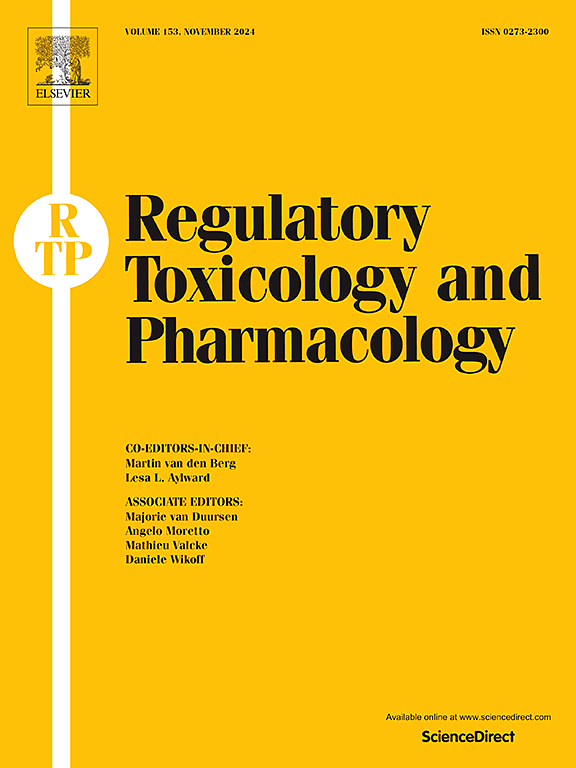Assessment of phototoxicity potential of botanicals as cosmetic ingredients using the in vitro 3T3 neutral red uptake phototoxicity test
IF 3.5
4区 医学
Q1 MEDICINE, LEGAL
引用次数: 0
Abstract
Cosmetics and personal care products are frequently formulated with botanical ingredients due to their beneficial properties, the nature of their composition, and consumers’ interest for products with more natural or organic profiles. Compounds that absorb light significantly and are in contact with the skin have potential to become phototoxic upon exposure to sunlight. Here we demonstrate that an in vitro test methodology, the 3T3 Neutral Red Uptake Phototoxicity Test (3T3 NRU PT), is an effective screening tool in evaluation of botanical ingredients that absorb light in the Ultraviolet/Visible (UV/Vis) range. Thirty-eight prospective botanical ingredients were evaluated in the 3T3 NRU PT assay. Five botanicals were identified to have phototoxicity potential, and were eliminated from consideration for use. Thirty three botanicals were identified to have no phototoxicity potential in the 3T3 NRU PT; and a subset of six were further evaluated in a clinical confirmatory test that corroborated the data obtained using the in vitro test. Our results support this in vitro test method as a reliable, high throughput model in evaluating a large subset of compounds to efficiently identify those that pose a potential risk and to ensure that marketed cosmetic products do not contain ingredients with phototoxicity potential.

用体外3T3中性红吸收光毒性试验评价植物化妆品成分的光毒性潜力。
化妆品和个人护理产品经常使用植物成分,因为它们有益的特性,它们的成分的性质,以及消费者对更自然或有机的产品的兴趣。显著吸收光并与皮肤接触的化合物在暴露于阳光下时有可能成为光毒性。在这里,我们证明了一种体外测试方法,3T3中性红色吸收光毒性测试(3T3 NRU PT),是一种有效的筛选工具,用于评估植物成分吸收紫外线/可见光(UV/Vis)范围内的光。在3T3 NRU PT分析中评估了38种潜在的植物成分。五种植物药被确定为具有光毒性,并被排除在使用考虑之外。在3T3 NRU PT中鉴定出33种植物没有光毒性潜力;6个子集在临床验证试验中进一步评估,证实了使用体外试验获得的数据。我们的研究结果支持这种体外测试方法是一种可靠的、高通量的模型,用于评估大量化合物,以有效地识别那些构成潜在风险的化合物,并确保上市的化妆品不含有具有光毒性的成分。
本文章由计算机程序翻译,如有差异,请以英文原文为准。
求助全文
约1分钟内获得全文
求助全文
来源期刊
CiteScore
6.70
自引率
8.80%
发文量
147
审稿时长
58 days
期刊介绍:
Regulatory Toxicology and Pharmacology publishes peer reviewed articles that involve the generation, evaluation, and interpretation of experimental animal and human data that are of direct importance and relevance for regulatory authorities with respect to toxicological and pharmacological regulations in society. All peer-reviewed articles that are published should be devoted to improve the protection of human health and environment. Reviews and discussions are welcomed that address legal and/or regulatory decisions with respect to risk assessment and management of toxicological and pharmacological compounds on a scientific basis. It addresses an international readership of scientists, risk assessors and managers, and other professionals active in the field of human and environmental health.
Types of peer-reviewed articles published:
-Original research articles of relevance for regulatory aspects covering aspects including, but not limited to:
1.Factors influencing human sensitivity
2.Exposure science related to risk assessment
3.Alternative toxicological test methods
4.Frameworks for evaluation and integration of data in regulatory evaluations
5.Harmonization across regulatory agencies
6.Read-across methods and evaluations
-Contemporary Reviews on policy related Research issues
-Letters to the Editor
-Guest Editorials (by Invitation)

 求助内容:
求助内容: 应助结果提醒方式:
应助结果提醒方式:


